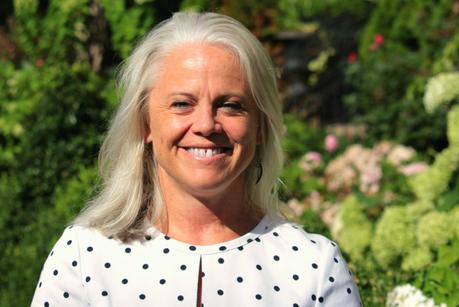
Laurie Adams
The United Nations has committed to achieving gender equality and empowering women and girls everywhere by 2030. Some specific targets include ending all forms of discrimination against all women, eliminating all forms of violence against all women, ensuring women’s full and effective participation in public, economic, and political life, and ensuring universal access to sexual and reproductive health resources and reproductive rights. Considering that over 60 million girls were out of school in 2013, one in three women worldwide are victims of physical or sexual violence by an intimate partner, and women hold on 20% of positions in government worldwide, these are challenging targets that will involve the efforts not only of international governments, but grassroots organizations as well.
That’s where Women for Women International (WfWI) comes in. WfWI supports women in countries affected by conflict and war by empowering them economically, connecting them to support networks, and educating them about their health and rights. Since 1993, WfWI has helped over 462,000 women in eight countries around the world.
Today, Laurie Adams – a lifelong activist and advocate for equality – serves as the President of Women for Women International. After spending 20 years living in several countries in Africa, Laurie moved back to the United States to work for WfWI in Washington, D.C. just one year ago. I spoke with Laurie about her beginnings as a student activist at Dartmouth, her job as president of a global nonprofit, and how the Trump administration has impacted WfWI and marginalized women around the world.
Today, you’re the president of Women for Women International, but how did you first get involved in working for women’s rights and human rights advocacy?
I grew up all over the world, going to school on military bases. I was born in Korea, went to primary school in Germany, middle school in the US, and secondary school in Italy. It was a really global – but also really sheltered – existence! I went to Dartmouth, which I chose based on its ski team. There, I found out about apartheid, and I was absolutely horrified I couldn’t comprehend, like, how can there be a place – and this was in the late 80s – where black people still can’t vote? And where they can’t own land? At the same time, the school that I was at, Dartmouth, had huge problems with sexual harassment of female students; there were no women tenured professors; I was the only woman in my seminar. And the fraternity system was horrific to women.
I became a student activist, and most of what I’ve learned in life I learned in those years. I tried to figure out: how do you bring about change? I learned negotiating skills by negotiating with the trustees and the administration. I learned how to put out newsletters. I learned how to organize by working with local immigrants and refugees. It all kind of started at university, when I hit up against my first experience with the “real world”.
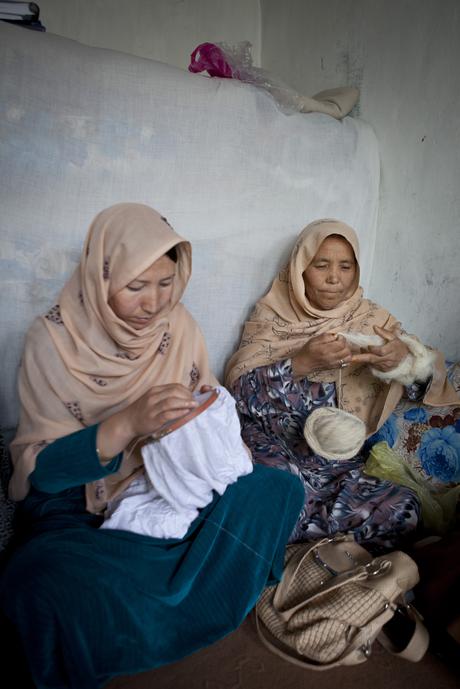
Credit: Hazel Thompson
A lot of Fbomb readers are in college or high school, so it’s interesting to hear you speak about your time at Dartmouth – it sounds like we all may have some shared experiences with student activism and advocacy. Could you expand upon any of the people, or clubs, or events that were particularly influential to your future work?
There were a number of formal clubs – like Stet, an alternative student paper, and a women’s collective, and the Dartmouth Community for Divestment – but some of the most important things happened more spontaneously. For example, on Martin Luther King’s birthday, some students knocked down with sledgehammers the symbols we had put up to protest apartheid. The next day, there was a huge uproar, and the African American society, the international students and the women’s movement all joined together and occupied the administration building and got the whole school, for the whole day, to look at issues of inequality. That wasn’t like a formal club, it was more like people organizing together to say, “we really have to shift things here”, and getting the administration to agree that there was an urgent need to educate the community on issues of inequality.
Where did you go after college and how did you get involved with Women for Women International?
After college, I went to Nicaragua to learn from people there, and then returned to San Francisco to do solidarity work with a (then) small organization called Global Exchange. I got the job by first volunteering – until they eventually started paying me to be one of the first two paid staff people. When Mandela was released from prison two years later – he’d been in prison for over two decades in South Africa- Global Exchange sent me to Johannesburg with the grand tile of ‘Southern Africa Representative’ to see what could Americans do to help the new South Africa and other countries in the region such as Mozambique, Zimbabwe, and Angola. I fell in love with the region and stayed. I only moved back to the U.S. a year ago to work for Women for Women International. In the 20 years that I spent in Africa, I was really inspired by what I learned from African women and men. As a U.S. citizen, I believe my most important role is to bring what I had learned from working with African feminists and other activists to the US and to build more connections between feminists here and those around the world.
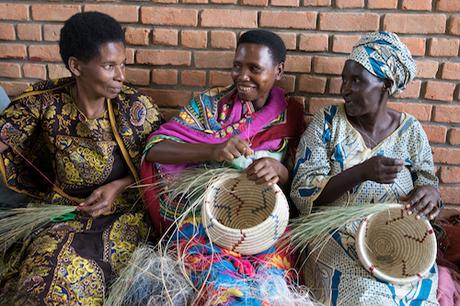
Credit: Hazel Thompson
As president, what is your role in advancing each of Women for Women International’s initiatives?
I think the most important thing that the leader of this kind of an organization does is bring everyone together around a common vision. So, what kind of change do we want to make? With Women for Women, we want to end violence and extreme poverty for women who are survivors of war in countries that are deeply patriarchal. We work with women who experience multiple kinds of discrimination – they’re struggling with a lack of rights and poverty, and they’ve experienced conflict and violence. My job is to ask: how are we going to make that impact, and what’s the best way to do that? I constantly scan the environment and think about what we have to do differently.
For example, we’re a nonpartisan organization, but we went to the Women’s March. And some people questioned that. But the Women’s March was about upholding the rights of women, in the U.S. and internationally. That’s what we do, so we needed to be there. As president, helping the organization make that decision and following through on it was really important. It made people feel connected, understand what we stood for as an organization, and it gave people energy.
How has the Trump administration affected the kind of international, women-focused aid work that Women for Women International does?
We’re actually not as directly affected as some organizations, because the way Women for Women International works is individuals in the U.S. sign up and sponsor a woman in another country. For example, at the moment, I’m sponsoring Reza Ghul in Afghanistan. I pay $35 a month, and that allows the woman to go through our one-year program. Our program helps women learn vocational and business skills and learn about their rights and health. We also give women a $10 monthly stipend so they can practice saving. So what the US government is doing doesn’t directly affect our program.
However, it does directly affect the women we serve. For example, a key part of what we do is health referrals. The US government under Trump has radically expanded the Global Gag Rule so that ALL funding is cut off – even for malaria for example – to any organization doing anything at all on reproductive health. That means that there will be far less services for the women we serve to access.
However, if the US stops funding the United Nation and stops accepting refugees, then our work gets harder. We work with Syrian and Yazidi women survivors of war and genocide in Northern Iraq. If the US isn’t engaging positively in resolving the refugee crisis, then that crisis gets worse. We need our government to be the primary duty-bearers for people’s rights – not non-profits or non-governmental organizations (NGOs). NGOs can help out when things are in crisis, but we can’t make fundamental changes at the same level that government policies can.
We also rely on funding from institutions like the UN Trust Fund. With their support we’ve been able to expand our work in the Kurdistan region of Iraq. Our work helps women who have directly been impacted or displaced by war and conflict. Their needs are immense. If the UN doesn’t have the funding to support these women, how are they going to heal from the trauma of war and sexual and gender-based violence?
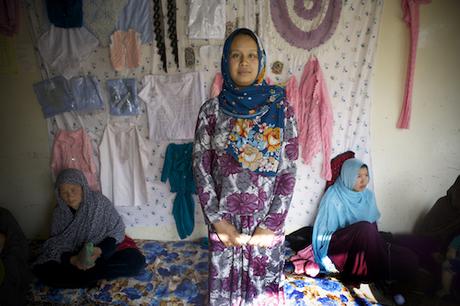
Credit: Rada Akbar
In America, there tends to be a lot of skepticism surrounding American organizations that try to create change in developing countries. There’s this white savior industrial complex – which essentially says that there are these Western countries swooping in to try and solve humanitarian crises in order to save others. How do you think the work of WfWI engages with that concept and mitigate the concerns that the white savior industrial complex raises?
I remember when I first moved to Africa in 1990, one of my old babysitters said, “Laurie, you’re going to Africa to help people!” and I said, “I’m not going to Africa to help people, I’m going there to learn.” I went there for myself. You know, hopefully in life we all help some people along the way, but I certainly didn’t go to South Africa as any kind of white savior trying to help Africans. In fact, I was given an opportunity to grow in a way that I wouldn’t have otherwise and the feminists I met there guided my thinking. It is important to see the people we work with as equals deserving of the same dignity as ourselves. As for Women for Women International, we hire local staff. Our trainers are local as well. Having a non-local staff based in a country office is a rare exception for us, not the rule.
Does Women for Women International consult the women who are being helped to make sure that the workshops are making a meaningful impact? Do you seek input from the communities you work in?
Absolutely. One of the interesting things about the model that Women for Women International ended up with – this combination of cash stipend and training and business support – is that every year, since our founding 25 years ago, something has been added or changed because of feedback from the women we serve. When we had just started our program, we just gave women cash. The women we served in Bosnia told us that cash wasn’t enough. They needed support structures and wanted to learn skills. Based on their needs, we started organizing support groups, and helping women understand their rights. In 2002, the women we served in Nigeria said “you know what, you’re teaching us our rights and you’re teaching us negotiating skills, but it’d be a whole lot easier if you talked to our men, too.” So we added in men’s engagement. And just this year, because of feedback from the women we formalized a mechanism for saving and lending. Our program is also tailored to the needs of women in every context. For example, in Afghanistan women are limited in their mobility outside the house, so we teach them animal husbandry, embroidery or other skills so they can earn an income even at home. In the DRC, women are already engaged in farming so we give them skills to improve their farms and their businesses. We are guided by those we serve.
You’ve got to mix people’s experiences and really listen to them, while using what specialists and experts have learned. It’s a mix of local knowledge with other knowledge that often makes the best impact possible.
What are some of the initiatives of Women for Women aiming to create this kind of systemic change and transformation that you’re particularly excited about?
For one, our core program – a one-year program – has phenomenal results. I’ve been doing this work for 30 years and it’s the best program of its kind I’ve seen. I’m excited about making sure we get as many women through that program as possible. Another part that’s exciting is our men’s engagement program, which we’ve been doing since 2002. We’ve sent 15,000 men through a program that helps them understand women’s rights and the way we measure the results of the program isn’t just from the men, but from the women in their family as well. It’s important to help men understand that they can support women’s rights while also supporting their religion and cultural customs.
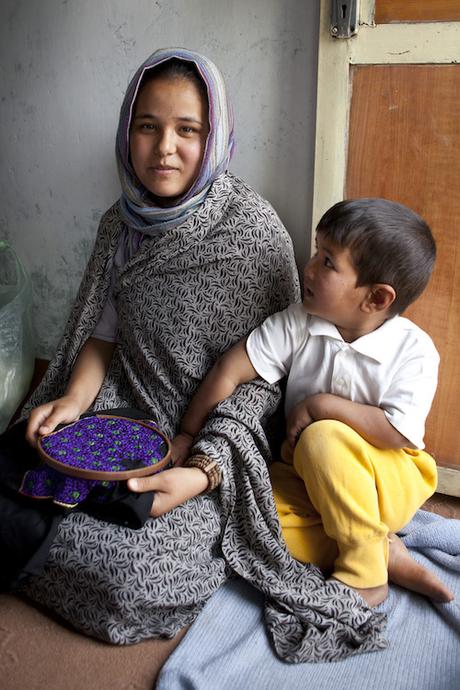
Credit: Hazel Thompson
What do you think is the most rewarding part of your work?
Being able to see how women’s lives are transformed. It’s such a privilege to be able to meet women and hear them explain how something has changed their lives. I was in Rwanda, most recently, and I met this group of young women who had all gotten jobs at the Marriott hotel after going through our program. I had asked if any of them had time to speak with me. Of the 27 people that had gotten jobs, 17 of them showed up on a Saturday afternoon, because they were so eager to tell me about how their lives have changed being able to earn an income. Many of them told me: “Now when I leave the house, my family goes, ‘There goes the boss!’ When I walk across the street, people look at me with respect, because I have a job and I’m bringing home income. Before I was invisible, and now people look up to me.” The joy just poured out of them. You know, most of them were in their early 20s and they were from rural areas. For them, this chance to leave a place where they didn’t necessarily see a future for themselves and to take control of their lives was huge. It’s super exciting to meet women and to see the change.
I’ve had that privilege of meeting women we serve for many years – what is new about my new role here in the US is the opportunity to also meet directly with and get to know supporters. The women who have built up WfWI are just phenomenal. We have one supporter in California – Lauri Pastrone – who actually went out and created a whole cook book for us. The book’s proceeds support Women for Women International. I recently read a letter from one of our young sponsors who is herself from Burundi but living in the U.S. She wrote about seeing the impact of the civil war on the people she loves in her country and wishing she could contribute to the heeling.
“The mission of Women for Women gives me a concrete method to support the dreams and hopes of women who have experienced civil war. For years, I have longed to be a part of the healing process and I am honored to be a part of the sisters’ support system.” She told us. It gave me so much joy to see how inspired she was by our work.

